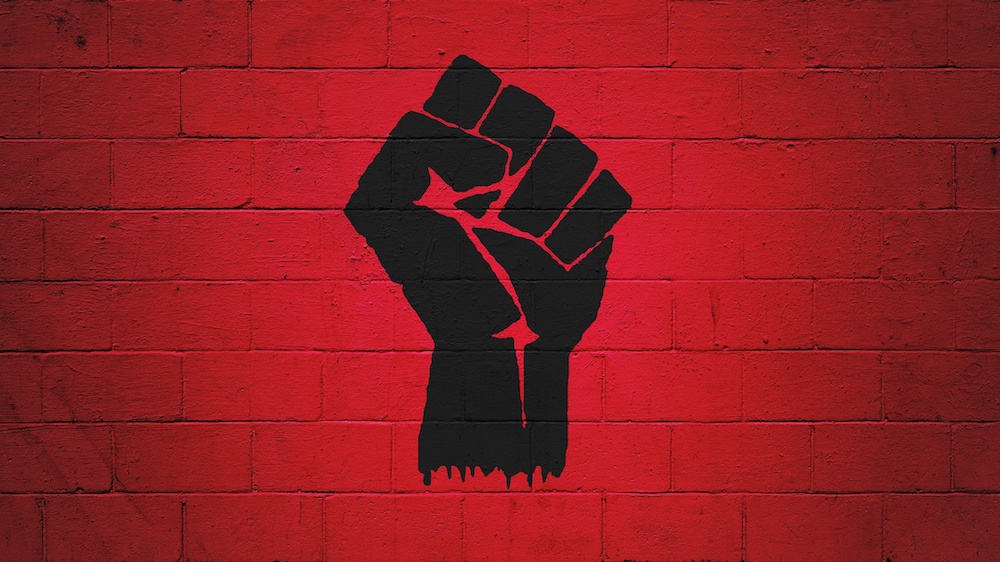If you’re interested in sharing your opinion on any cultural, political or personal topic, create an account here and check out our how-to post to learn more.
Opinions are the writer’s own and not those of Blavity's.
____
Before watching the Oscar-nominated film, Judas and the Black Messiah, I hadn’t heard much about Fred Hampton. The little I did know about the Black Panther Party was a whitewashed version of the group as violent and militant. Judas accurately portrayed Fred Hampton’s life, and the cast and crew of the film have garnered much praise and awards for their roles and storytelling. Watching the movie sparked my interest in learning more about the Black Panther Party and how important it is to tell Black stories accurately.
Here are six facts you should know about the Black Panther Party:
1. It was founded in Oakland, California.
Originally named the Black Panther Party for Self-Defense, the party was founded on October 15, 1966, by Huey P. Newton and Bobby Seale, who met at Merritt College in Oakland, California. The original purpose of the party was to protect the community from police brutality, but it expanded to advocate for social reform and economic equality. The group’s mission and goals were laid out in the Ten-Point Program, which was influenced by a Marxist political philosophy and the ideals of Malcolm X, to take action.
2. The group aided the Black community.
By the late 1960s, the party had grown nationally, with chapters in several major American cities like Chicago, Atlanta and Philadelphia. Local chapters of the panther party led various community relief efforts. They organized a free breakfast program for 20,000 children and free food for families and the elderly. They campaigned for prison reforms, held voter registration drives and opened free clinics for those who didn’t have healthcare. Women were a big part of helping the community and providing these services to people.
3. They carried guns for protection and cop-watching.
In 1966, California law permitted civilians to carry firearms publically. The party used this law to their advantage to protect themselves when cops were harassing them or their neighbors. A year later, in an effort to disarm the party, California passed the Mulford Act to repeal the public carrying of firearms.
The party viewed this gun control bill as a way for the government to prevent them from defending themselves against police brutality. In response to this, they held a protest at the California State Capitol in Sacramento, bringing them to national recognition.
4. The FBI viewed the group as a national threat.
J. Edgar Hoover, the FBI director, established the counterintelligence program, COINTELPRO, to dismantle the group. He described the group as, “the greatest threat to the internal security of the country” and spread false narratives about the group to the media. The FBI also used several tactics such as sabotage, misinformation, informants and lethal force to eradicate the group.
The back and forth between the party and the FBI reached a climax when a five-hour police shootout took place at the party’s headquarters in Southern California, and a raid in Chicago that resulted in Fred Hampton’s death.
5. The party’s membership declined during the 1970s.
By the mid-1970s through the ‘80s, the COINTELPRO’s actions and the dissolution of the party’s leadership led to a major decrease in the party’s members and they weren’t as active as before. Many of the leadership were either killed, in jail or moved on to other ventures. In addition, public support of the group declined after reports of criminal actions by the party.
By 1980, all but 27 members had left the group, and Newton, one of the group’s co-founders, died a few years shortly after in a drug dispute.
6. Their legacy remains to this day.
Although not in the public eye anymore, the Black Panther Party is regarded as the most effective Black revolutionary organization in the 20th century and continues to influence movements of liberation and justice. They inspired many activists and organizations around the world. They taught many young people to be proud and embrace their Black identity. Though some may not agree with their tactics, they stood for Black equality, which continues to resonate with current social movements like Black Lives Matter.
